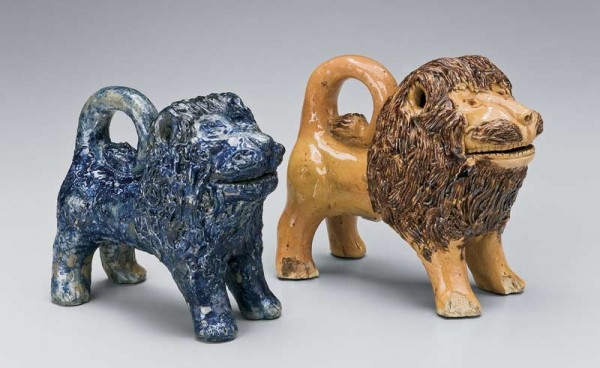
Lion figures, John Bell (1800–1880), Waynesboro, Pennsylvania, 1845–1850. Blue-glazed stoneware. H. 7 1/2". Impressed mark: “JOHN BELL / WAYNESBORO” (Courtesy, Collection of Robert A. Ellison Jr.; photo, Robert A. Ellison Jr.)
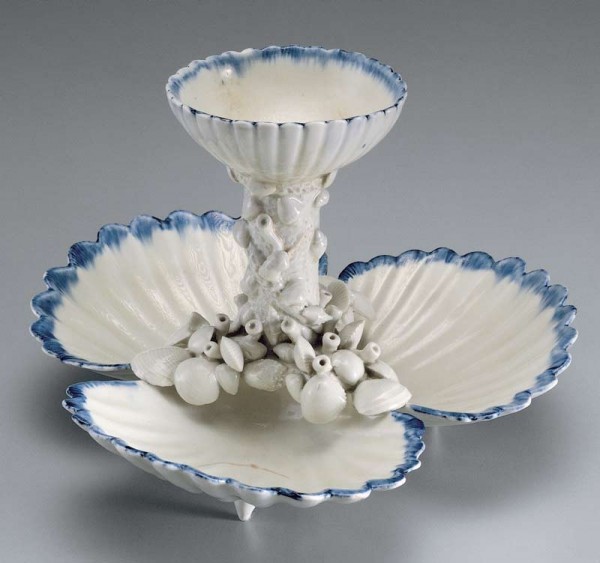
American China Manufactory Bonnin and Morris: American, active 1770–1772 Pickle Stand soft-paste porcelain overall 5 1/2" x 7 1/4". (National Gallery of Art, Promised Gift of George M. and Linda H. Kaufman; object #: X.45825, photo, Gavin Ashworth.)
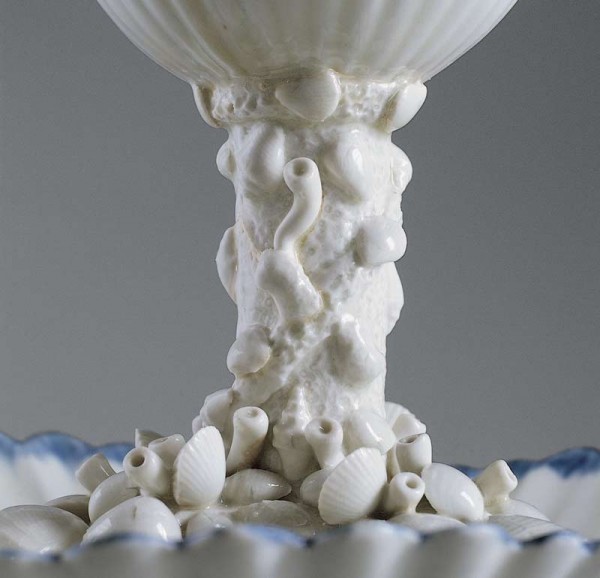
Detail of the stalk of the pickle stand illustrated in fig. 2.
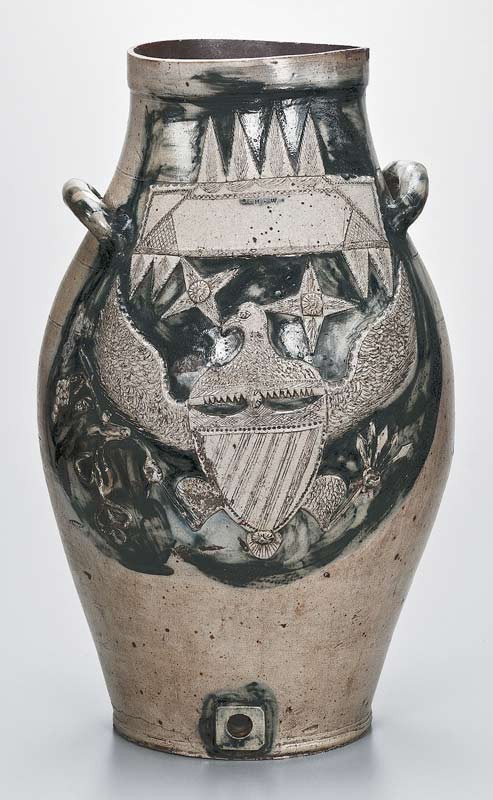
Cooler, attributed to Jonathan Fenton, Boston, Massachusetts, 1793–1796. Salt-glazed stoneware. H. 24 3/4". (Courtesy, Collection of Robert A. Ellison Jr.; photo, Robert A. Ellison Jr.)
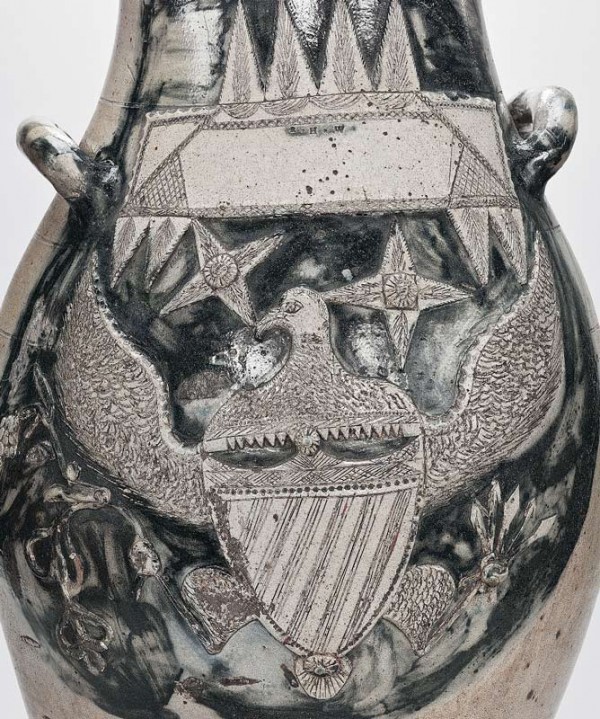
Detail of the cooler illustrated in fig. 4.
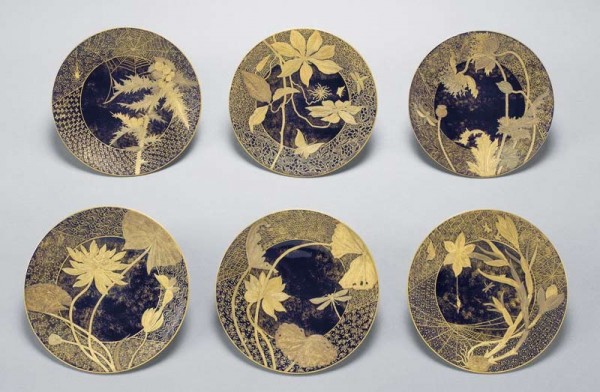
Set of six plates, decorated by James Callowhill, 1888. Blue-ground porcelain. D. of each 7 5/8". (Courtesy, Saint Louis Art Museum.) Each of the six plates, conceived in pairs, has a unique design, incorporating naturalistic flowers, insects, spiders and webs, all modeled in high-relief gold pastes in the Japanese taste that was popular during the American Aesthetic Movement. One is signed “Jas. Callowhill”; the others bear initials.
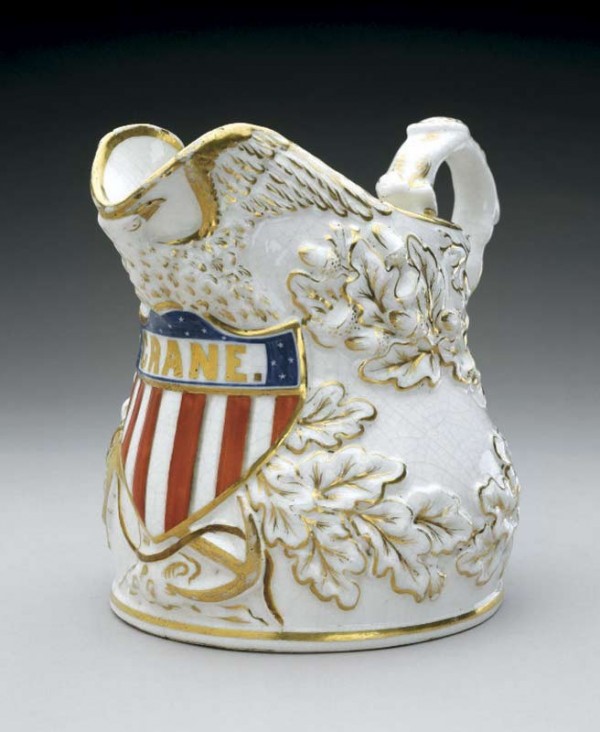
Presentation pitcher, Charles Cartlidge & Co., Greenpoint, New York, ca. 1853. Porcelain. H. 10 1/8". (Courtesy, Museum of Fine Arts, Houston, Bayou Bend Collection and Gardens.)
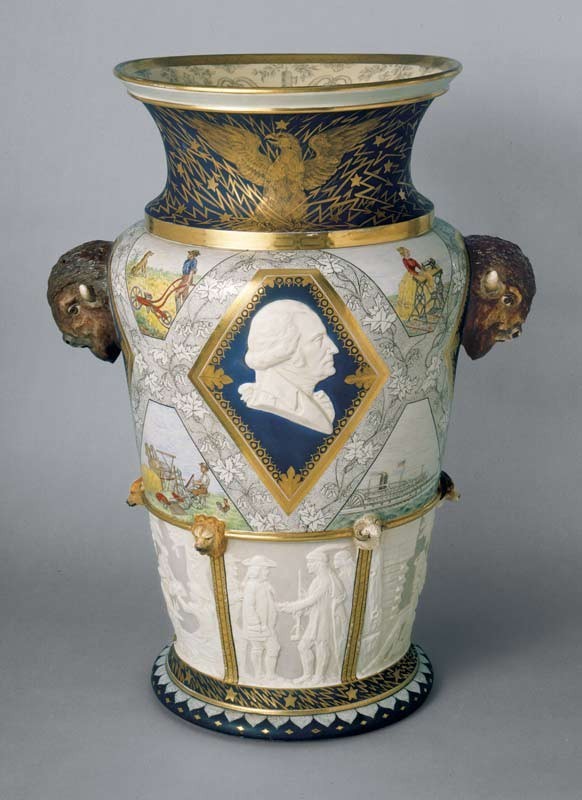
Century Vase, Union Porcelain Works, Greenpoint, New York, designed by Karl H. L. Müller, 1876. Porcelain. H. 22 1/4". (Courtesy, High Museum of Art.)
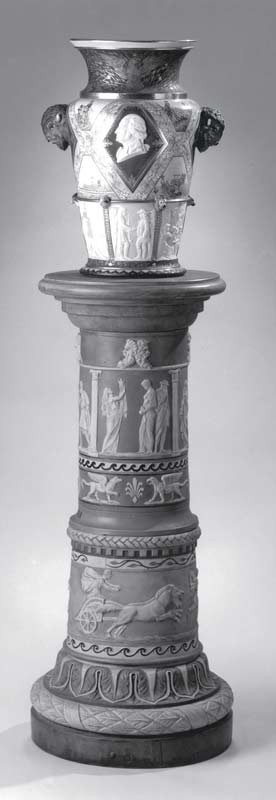
Century Vase, Union Porcelain Works, Greenpoint, New York, designed by Karl H. L. Müller, 1876. Porcelain. H. 40 13/16". (Courtesy, High Museum of Art.) The vase is shown on a pedestal, as it was at the Centennial in 1876.
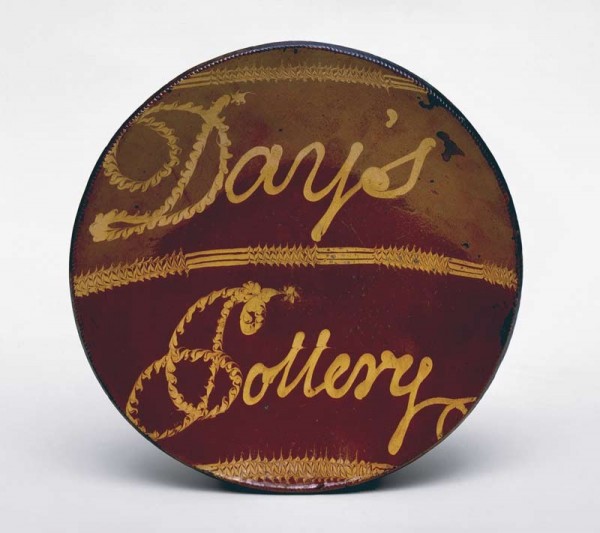
Dish, Absalom Day, Norwalk, Connecticut, ca. 1796. Slipware. D. 15 1/2". (Courtesy, High Museum of Art.) This combed slipware charger was probably a shop sign or advertisement.
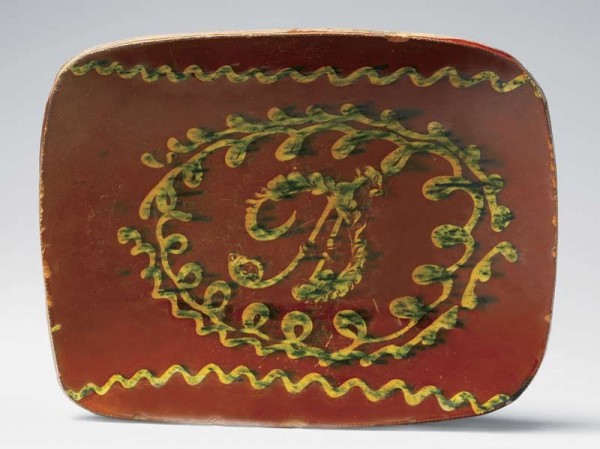
Loaf dish, Absalom Day (1770–1843), Norwalk, Connecticut, 1793–1796. Redware with slip decoration. L. 16 1/2". Mark: conjoined initials “AD” (Courtesy, The Metropolitan Museum of Art.)
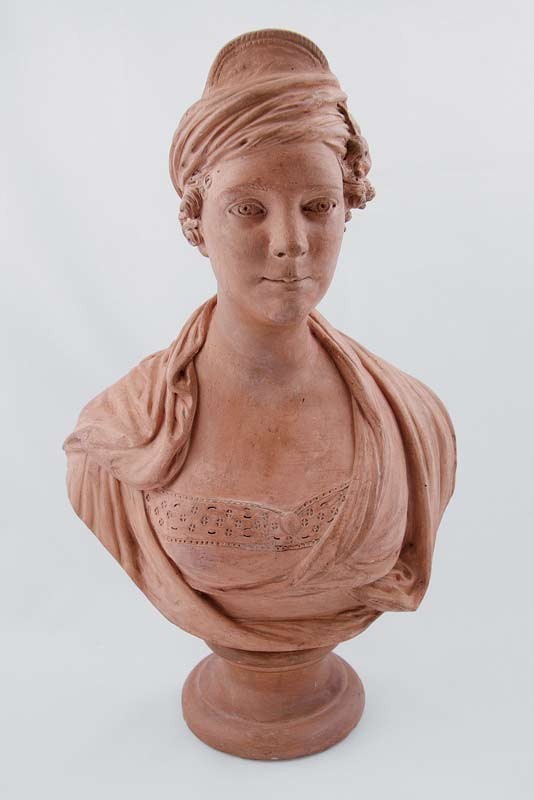
Bust of Dolley Madison, modeled from life by William John Coffee, 1818. Terracotta. Overall H. 13". (Courtesy of The Montpelier Foundation, James Madison's Montpelier.)
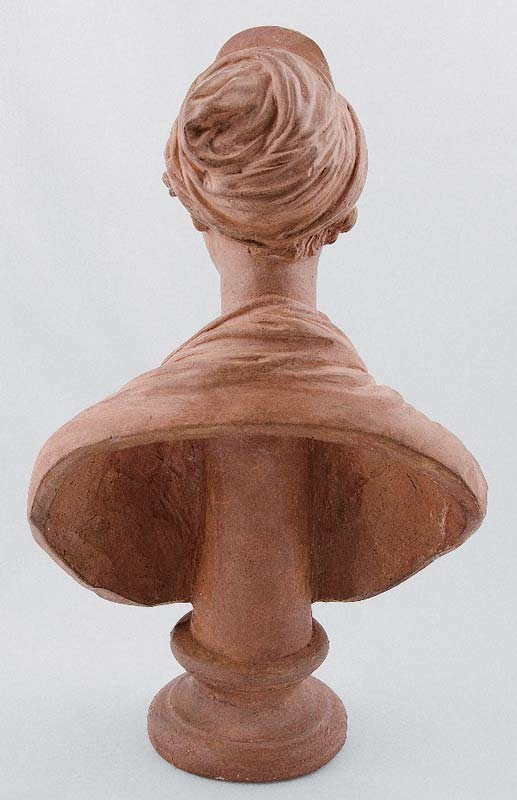
Reverse of the bust of Dolley Madison illustrated in fig. 12. (Courtesy of The Montpelier Foundation, James Madison's Montpelier.)
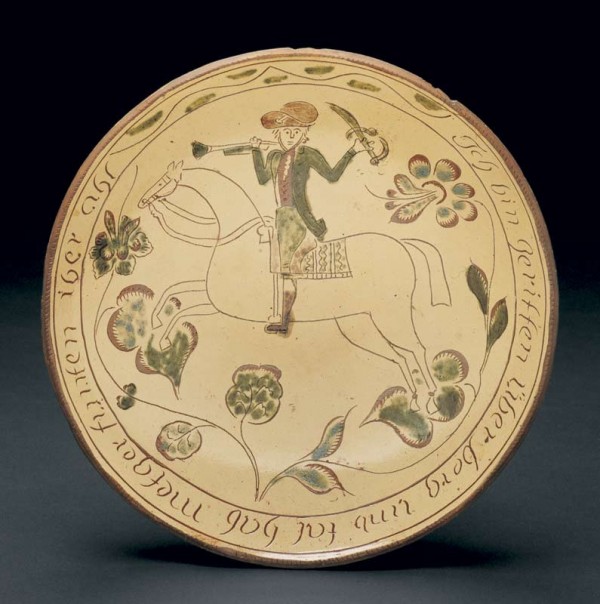
Plate, attributed to Johannes Neesz or Nase, Tyler’s Port, Montgomery County, Pennsylvania, 1805–1820. Sgrafitto-decorated slipware. D. 12 1/2". Inscription [translated from German]: “I have ridden over hill and dale and everywhere found [pretty] girls” (Courtesy, High Museum of Art; photo, Richard P. Goodbody.) The plate is decorated with a popular image, said to be George Washington rousing the countryside to arms.
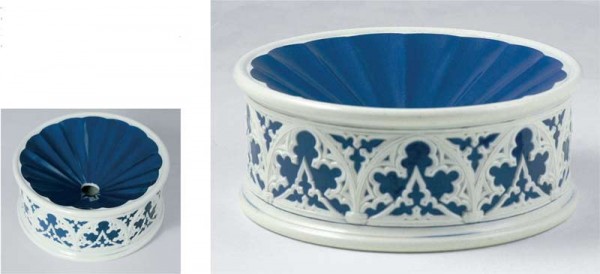
Spittoon, American Pottery Company, 1842. Earthenware. D. 8 1/4", H. 3 3/8". (Courtesy, The Franklin Institute, 77.1631.)
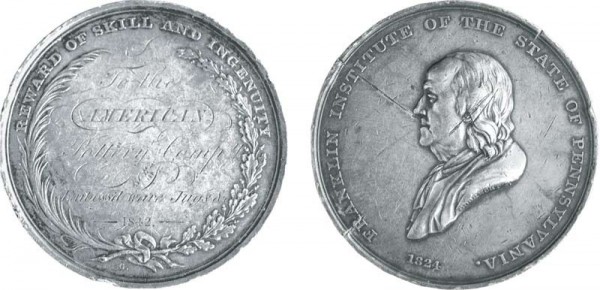
Medal, designed by Christian Gobrecht (engraver) for the Franklin Institute, Philadelphia, Pennsylvania, 1842. Silver. D. 2". Marks: (reverse) “REWARD OF SKILL AND INGENUITY / To the / AMERICAN / Pottery Compy / for / Emboss’d ware, Jugs &c. / 1842 / G.” (obverse) “FRANKLIN INSTITUTE OF THE STATE OF PENNSYLVANIA. 1842”; “GOBRECHT” (Collection of the authors; photos, Diana Stradling.)
